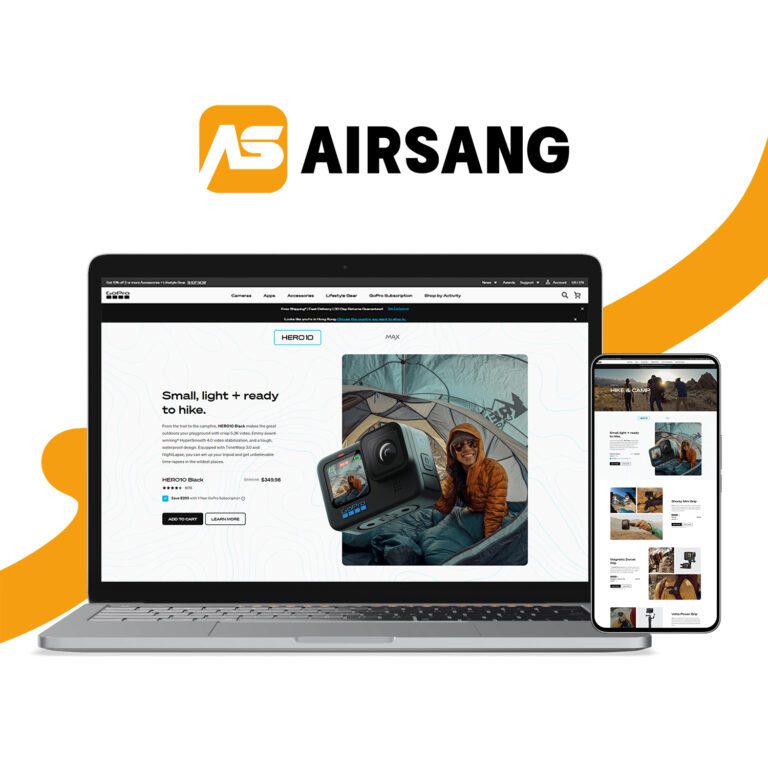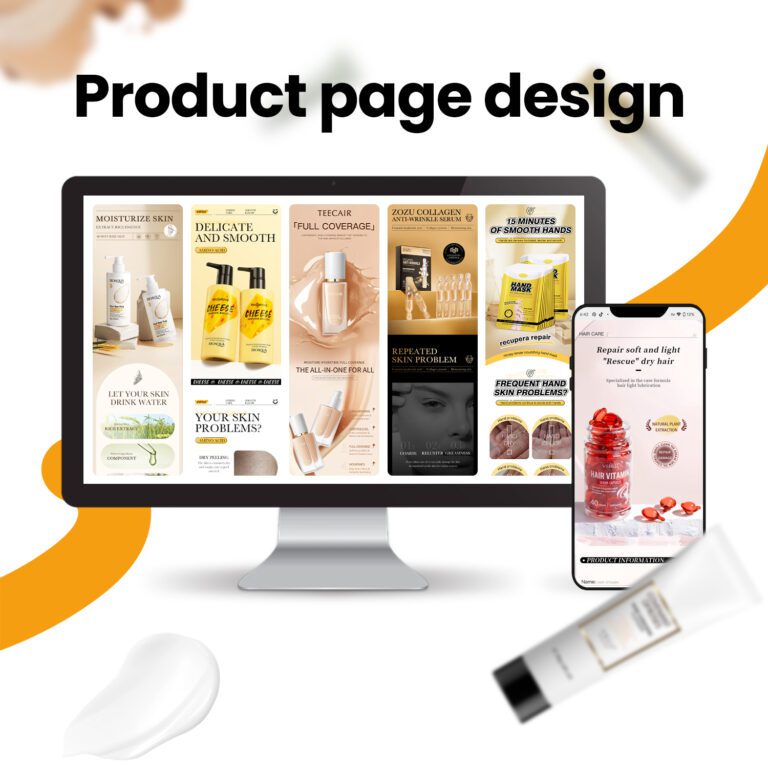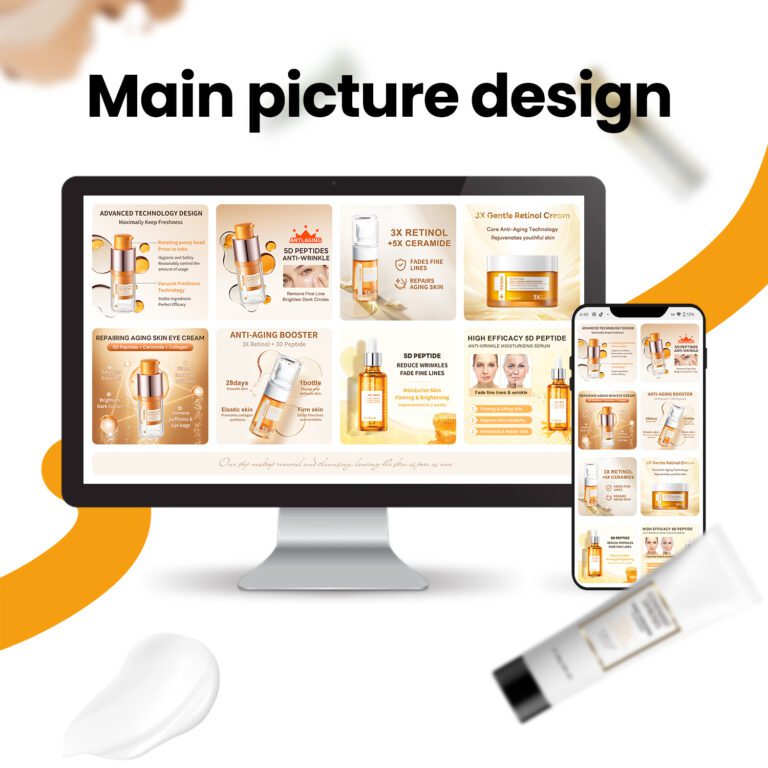“Independent Station: A Complete Guide from Zero to One”
Independent stations are a growing model for Chinese cross-border e-commerce, boosting brand awareness, profit margins, and reducing reliance on third-party platforms. Choosing between WordPress or Shopify depends on the target audience, budget, and technical capabilities. Effective website design, UX, SEO, and digital marketing are key to attracting visitors and converting them into customers. At Airsang Design, we help e-commerce sellers succeed by optimizing their independent sites for maximum performance.
Website construction
WooCommerce advantages:
- High flexibility: Based on WordPress, customizable design and functions, suitable for users with technical foundation.
- SEO optimization: Deeply compatible with WordPress, helps improve search rankings.
- Cost controllable: Rich plug-ins and themes, on-demand expansion, high cost performance.
Shopify:
- Easy to use: intuitive interface, rich templates, suitable for beginners.
- All-day support: 24/7 customer service, answer questions at any time.
- Full-featured: built-in payment gateway and marketing tools, easy to manage the store.
Optimize user experience
Smooth shopping process: simplify checkout steps and provide multiple payment methods.
Responsive design: ensure that the website is well adapted on mobile phones, tablets and computers.
User-friendly interface: simple and intuitive design, clear navigation, and eye-catching and easy-to-use buttons.

Product Positioning
Brand positioning optimization version:
- Smooth shopping process: simplify checkout steps and provide multiple payment methods.
- Responsive design: ensure that the website is well adapted on mobile phones, tablets and computers.
- User-friendly interface: simple and intuitive design, clear navigation, and eye-catching and easy-to-use buttons.
Product Selection Optimization:
- When Xiaomi entered the smartphone market, there were already many competing brands. Xiaomi accurately positioned itself as a high-cost-performance company, providing high-performance and reasonably priced mobile phones, successfully attracting low- and middle-income consumers, quickly seizing market share and establishing a large user base.
- Market potential: Obtain data through market research, identify high-potential product categories, and comprehensively consider market demand, competitive landscape and profit margins.
- Product differentiation: Select products that can fill market gaps or provide unique value, and ensure that they have competitive advantages in terms of function, quality or service.
Market Research
- Competitor Analysis Optimized Version
- Pepsi vs Coca-Cola
- The two brands constantly adjust their marketing strategies based on the performance of their competitors. Coca-Cola relies on its “classic” image to stabilize loyal consumers, while Pepsi uses youthful marketing to attract a new generation of people.
- Competitor Performance
- Identify major competitors and evaluate their market share, product features, pricing strategies and marketing methods. Use SWOT analysis (strengths, weaknesses, opportunities, threats) to accurately analyze the competitiveness and development potential of competitors.
- Industry Status
- Analyze market size, growth trends and industry dynamics to understand the overall health of the market.
Target audience analysis
Nike collects user feedback through social media and online surveys to gain a deep understanding of consumers’ needs and preferences for sports shoes. After discovering the strong demand for personalization and customization, it launched the “Nike By You” service, allowing users to freely customize their own shoes.
- Consumer preferences: Analyze users’ purchasing habits, brand loyalty and product preferences, combine data analysis and user behavior research to accurately grasp market trends.
- Consumer needs: Explore the specific needs of target users through multiple channels, including their pain points, preferences and expectations in this area.
Marketing strategy
- Traffic acquisition conversion rate improvement
- Optimize product pages: improve user experience and increase conversion rate.
- Promotion strategy: use discounts, coupons, limited-time promotions and other methods to stimulate purchasing desire.
- SEO optimization: improve search rankings and attract natural traffic through keyword optimization, content updates and external link construction.
- Social media marketing: publish content on platforms such as Facebook and Instagram to interact with potential customers and increase brand exposure.
- Content marketing: create high-quality blogs, videos and graphic content to provide valuable information, attract audiences and enhance brand influence.

Data analysis
- User behavior analysis
- Performance evaluation
- Optimize product pages
- Regular checks: Regularly evaluate sales data, traffic sources and conversion rates to measure the effectiveness of marketing activities.
- Promotional strategies: Attract users through discounts, coupons or limited-time events.
- Optimization plan: Develop the next marketing and optimization strategy based on the evaluation results.
- Monitoring tools: Use Google Analytics to track user access paths, dwell time and bounce rates, and analyze behavioral patterns.
- Strategy adjustment: Optimize website layout, content and marketing strategies based on data analysis.
If you are interested in these contents or want to know how to optimize your independent website, please feel free to contact airsang design!
















